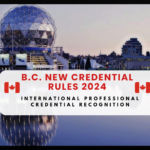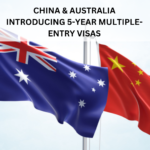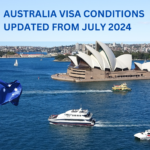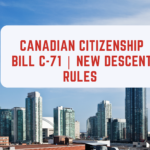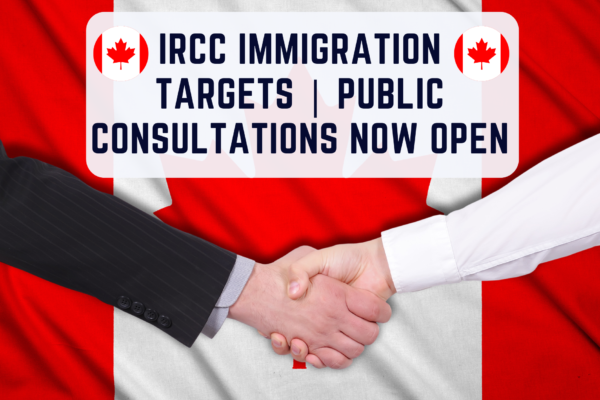
IRCC Immigration Targets | Public Consultations Now Open
Public consultations have been opened by Immigration, Refugees and Citizenship Canada (IRCC) in order to establish the plan for yearly immigration numbers in 2024. Immigration Minister Marc Miller will release the next multi-year Immigration Levels Plan for 2025–2027 in November, thus these consultations are essential. The IRCC Immigration Targets, which specify the quantity of new permanent residents Canada hopes to accept year, will be described in this plan. In order to ensure that the IRCC Immigration Targets set for the future years are in line with Canada’s needs and priorities, input from these consultations will be crucial in defining the targets. Expanded Scope of IRCC Immigration Targets The Immigration Levels Plan’s scope is being extended for the first time to consist of annual targets for both new temporary residents and permanent residents. The IRCC Immigration Targets have been expanded, signifying a more all-encompassing approach to immigration and greatly widening its reach. Up until June 30, 2024, Canadian residents, stakeholders, and immigration professionals are invited to provide feedback on the IRCC Immigration Targets. The IRCC seeks to create a more comprehensive and successful immigration policy by including input on IRCC Immigration Targets. Current Immigration Targets Canada aims to bring in 485,000 new permanent residents by the year 2024. In the upcoming years, the IRCC Immigration Targets want to stabilize this figure at 500,000 per year. This audacious objective demonstrates Canada’s dedication to diversity and expansion, guaranteeing a consistent stream of newcomers to foster community and economic prosperity. In order to shape these aims, the IRCC is consulting with the public, highlighting the significance of inclusive and well-thought-out immigration policy. Purpose of the 2024 IRCC Consultations on Immigration Levels The Immigration Levels Plan for 2025–2027 is getting closer, and the IRCC wants public input on a number of important points: Factors Influencing Annual Immigration Level Plans When setting the annual immigration levels plan, several factors are considered: Public Input on Immigration Categories The IRCC is also interested in public opinions on how to allocate permanent resident numbers among major immigration categories. The broad categories and their proportions as set for 2025 are: Immigration Category Percentage of Annual Targets Economic Classes (Express Entry and Provincial Nominee Programs) Just over 60% Family Sponsorship Almost 24% Refugee and Humanitarian Classes Just over 16% Setting New Immigration Levels The inclusion of targets for temporary residents, such as international students and temporary workers, reflects a more holistic view of immigration. This approach considers the supports required to integrate both temporary and permanent residents into Canadian communities. Current Set Immigration Levels for 2024 Canada’s annual immigration targets for 2024 are outlined below, with plans to stabilize at 500,000 new permanent residents annually: Year Total Low Range High Range 2024 485,000 430,000 532,500 2025 500,000 442,500 550,000 2026 500,000 442,500 550,000 Economic Immigration Targets Economic immigration, which includes programs like Express Entry and Provincial Nominee Programs (PNPs), plays a significant role in Canada’s immigration strategy: Year Low Range High Range 2024 250,000 305,000 2025 265,000 326,000 2026 265,000 326,000 Family Sponsorship Targets Family reunification is another critical aspect of Canada’s immigration policy: Year Low Range High Range 2024 105,000 130,000 2025 107,000 135,000 2026 107,000 135,000 Refugee and Humanitarian Targets Canada’s commitment to refugees and humanitarian efforts remains steadfast: Year Low Range High Range 2024 75,000 110,500 2025 70,500 92,000 2026 70,500 92,000 Record-Breaking Immigration Targets These targets represent the highest immigration levels ever set in Canadian history, reflecting Canada’s commitment to growth and diversity. Participating in the Public Consultation The IRCC has developed an online survey that you can use to participate in the public consultation on IRCC Immigration Targets. You should prepare your responses in advance because the survey software does not store your draft replies. Participating in this consultation gives you the opportunity to offer insightful comments on the IRCC Immigration Targets, which will assist in determining Canada’s immigration laws going forward. You may guarantee that new immigration targets are reflective of Canadian needs and ambitions by offering your insights into the process of target creation. With enough time to consider and get ready for your answers, the IRCC Immigration Targets consultation will be available until June 30, 2024. Assuring that Canada’s immigration numbers are in line with both community needs and national aspirations will require your active engagement. Conclusion An important first step in determining Canada’s future is the public consultations held by the IRCC for the annual immigration targets. The government makes sure that the IRCC Immigration Targets reflect the goals and needs of Canadian society by soliciting input from a range of stakeholders. This year’s broadened application to temporary residents represents a step forward in the administration of Canada’s immigration laws. These consultations are essential to ensuring that Canada stays inclusive and welcoming to newcomers as it sets aggressive IRCC Immigration Targets. The input gathered will be used to improve the IRCC Immigration Targets, which will enhance Canada’s diversity and growth by reflecting a fair and long-term immigration strategy. Click here for up-to-date information on visa and immigration changes.


